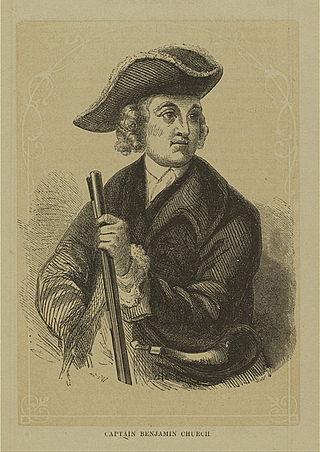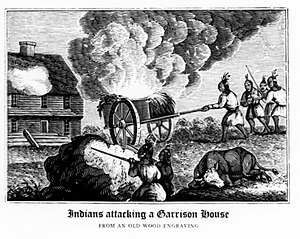
1661 (MDCLXI) was a common year starting on Saturday of the Gregorian calendar and a common year starting on Tuesday of the Julian calendar, the 1661st year of the Common Era (CE) and Anno Domini (AD) designations, the 661st year of the 2nd millennium, the 61st year of the 17th century, and the 2nd year of the 1660s decade. As of the start of 1661, the Gregorian calendar was 10 days ahead of the Julian calendar, which remained in localized use until 1923.

1680 (MDCLXXX) was a leap year starting on Monday of the Gregorian calendar and a leap year starting on Thursday of the Julian calendar, the 1680th year of the Common Era (CE) and Anno Domini (AD) designations, the 680th year of the 2nd millennium, the 80th year of the 17th century, and the 1st year of the 1680s decade. As of the start of 1680, the Gregorian calendar was 10 days ahead of the Julian calendar, which remained in localized use until 1923.
The 1630s was a decade that began on January 1, 1630, and ended on December 31, 1639.

1650 (MDCL) was a common year starting on Saturday of the Gregorian calendar and a common year starting on Tuesday of the Julian calendar, the 1650th year of the Common Era (CE) and Anno Domini (AD) designations, the 650th year of the 2nd millennium, the 50th year of the 17th century, and the 1st year of the 1650s decade. As of the start of 1650, the Gregorian calendar was 10 days ahead of the Julian calendar, which remained in localized use until 1923.
61257754019 The 1600s ran from January 1, 1600, to December 31, 1609.

1601 (MDCI) was a common year starting on Monday of the Gregorian calendar and a common year starting on Thursday of the Julian calendar, the 1601st year of the Common Era (CE) and Anno Domini (AD) designations, the 601st year of the 2nd millennium, the 1st year of the 17th century, and the 2nd year of the 1600s decade. As of the start of 1601, the Gregorian calendar was 10 days ahead of the Julian calendar, which remained in localized use until 1923.

1602 (MDCII) was a common year starting on Tuesday of the Gregorian calendar and a common year starting on Friday of the Julian calendar, the 1602nd year of the Common Era (CE) and Anno Domini (AD) designations, the 602nd year of the 2nd millennium, the 2nd year of the 17th century, and the 3rd year of the 1600s decade. As of the start of 1602, the Gregorian calendar was 10 days ahead of the Julian calendar, which remained in localized use until 1923.

1604 (MDCIV) was a leap year starting on Thursday of the Gregorian calendar and a leap year starting on Sunday of the Julian calendar, the 1604th year of the Common Era (CE) and Anno Domini (AD) designations, the 604th year of the 2nd millennium, the 4th year of the 17th century, and the 5th year of the 1600s decade. As of the start of 1604, the Gregorian calendar was 10 days ahead of the Julian calendar, which remained in localized use until 1923.
The 1660s decade ran from 1 January 1660, to 31 December 1669.
The 1670s decade ran from January 1, 1670, to December 31, 1679.

1654 (MDCLIV) was a common year starting on Thursday of the Gregorian calendar and a common year starting on Sunday of the Julian calendar, the 1654th year of the Common Era (CE) and Anno Domini (AD) designations, the 654th year of the 2nd millennium, the 54th year of the 17th century, and the 5th year of the 1650s decade. As of the start of 1654, the Gregorian calendar was 10 days ahead of the Julian calendar, which remained in localized use until 1923.

1658 (MDCLVIII) was a common year starting on Tuesday of the Gregorian calendar and a common year starting on Friday of the Julian calendar, the 1658th year of the Common Era (CE) and Anno Domini (AD) designations, the 658th year of the 2nd millennium, the 58th year of the 17th century, and the 9th year of the 1650s decade. As of the start of 1658, the Gregorian calendar was 10 days ahead of the Julian calendar, which remained in localized use until 1923.

1681 (MDCLXXXI) was a common year starting on Wednesday of the Gregorian calendar and a common year starting on Saturday of the Julian calendar, the 1681st year of the Common Era (CE) and Anno Domini (AD) designations, the 681st year of the 2nd millennium, the 81st year of the 17th century, and the 2nd year of the 1680s decade. As of the start of 1681, the Gregorian calendar was 10 days ahead of the Julian calendar, which remained in localized use until 1923.

1679 (MDCLXXIX) was a common year starting on Sunday of the Gregorian calendar and a common year starting on Wednesday of the Julian calendar, the 1679th year of the Common Era (CE) and Anno Domini (AD) designations, the 679th year of the 2nd millennium, the 79th year of the 17th century, and the 10th and last year of the 1670s decade. As of the start of 1679, the Gregorian calendar was 10 days ahead of the Julian calendar, which remained in localized use until 1923.

1676 (MDCLXXVI) was a leap year starting on Wednesday of the Gregorian calendar and a leap year starting on Saturday of the Julian calendar, the 1676th year of the Common Era (CE) and Anno Domini (AD) designations, the 676th year of the 2nd millennium, the 76th year of the 17th century, and the 7th year of the 1670s decade. As of the start of 1676, the Gregorian calendar was 10 days ahead of the Julian calendar, which remained in localized use until 1923.

King Philip's War was an armed conflict in 1675–1676 between a group of indigenous peoples of the Northeastern Woodlands and the English New England Colonies and their indigenous allies. The war is named for Metacomet, the Pokanoket chief and sachem of the Wampanoag who adopted the English name Philip because of the friendly relations between his father Massasoit and the Plymouth Colony. The war continued in the most northern reaches of New England until the signing of the Treaty of Casco Bay on April 12, 1678.

The Wampanoag, also rendered Wôpanâak, are a Native American people of the Northeastern Woodlands currently based in southeastern Massachusetts and formerly parts of eastern Rhode Island. Their historical territory includes the islands of Martha's Vineyard and Nantucket.

Colonel Benjamin Church was an American military officer and politician who is best known for his role in developing military tactics and participating in numerous conflicts which involved the New England Colonies. He is also known for commanding one of the first ranger units in North America. Born in the Plymouth Colony, Church was commissioned by Governor Josiah Winslow to establish a company of rangers after the outbreak of King Philip's War in 1675. A force of New Englanders led by him was responsible for tracking down and killing Wampanoag sachem Metacomet, which played a major role in ending the conflict.

The Great Swamp Massacre or the Great Swamp Fight was a crucial battle fought during King Philip's War between the colonial militia of New England and the Narragansett people in December 1675. It was fought near the villages of Kingston and West Kingston in the Colony of Rhode Island and Providence Plantations. The combined force of the New England militia included 150 Pequots, and they inflicted a huge number of Narragansett casualties, including many hundred women and children. The battle has been described as "one of the most brutal and lopsided military encounters in all of New England's history." Since the 1930s, Narragansett and Wampanoag people commemorate the battle annually in a ceremony initiated by Narragansett-Wampanoag scholar Princess Red Wing.




















